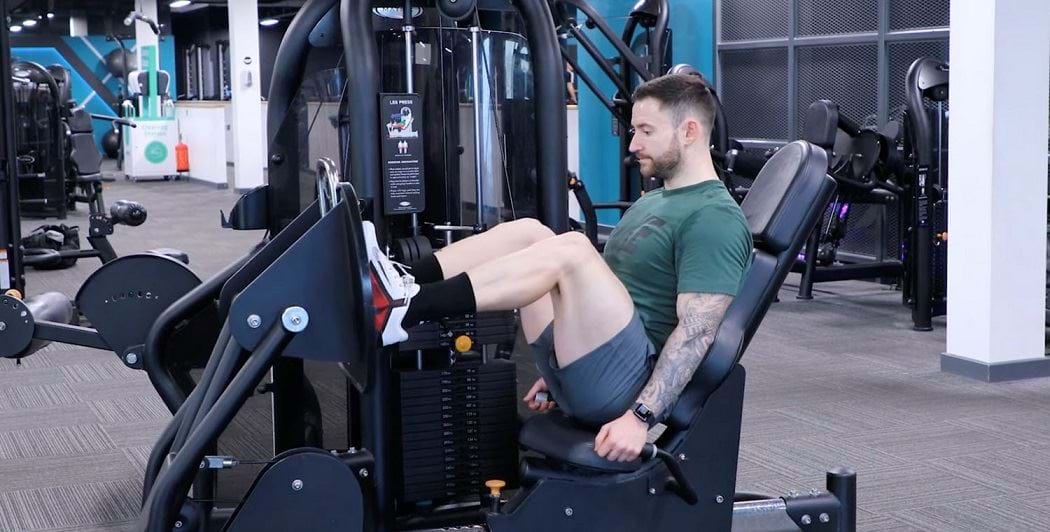Seated Leg Press
What Is A Seated Leg Press?

The seated leg press is a lower body exercise performed on the seated leg press machine to challenge the glutes, quads, calves, and hamstrings.
The seated leg press follows a similar movement pattern to the squat, but with the legs pushing the load horizontally. Because the torso is supported and the movement follows a fixed path, the seated leg press requires involvement from the core, helping to isolate the lower body more than in squats. This makes the movement easier, allowing for the leg muscles to be exposed to greater loads which can help to build lower body strength and hypertrophy.
The leg press can be used as an alternative to squats, however it is beneficial to include both exercises in your training programme for well-rounded strength and stability.
Commonly Asked Questions On Seated Leg Presses
The seated leg press is a good lower body exercise that can help to build strength and size of the legs. This is a good exercise for beginners learning the movement pattern, and for those who are unable to squat heavy due to core or balance issues. The 45-degree leg press is a more challenging variation that may be preferrable for those wanting to expose the legs to greater loads, as the angle of the plate creates more resistance.
The depth of your leg press will influence how many muscle fibres are recruited during the leg press. Aiming to get your knees to a minimum of 90 degrees will ensure the legs are sufficiently challenged, however the deeper you go the more strength you will build at end range motion. A good approach is to perform some sets at a weight that allows you to reach 90 degrees, then dropping the weight to increase the depth. However, you should only go to a depth that allows you to maintain a flat back – this will depend on your hip and ankle mobility.
There is no correct weight for a beginner to leg press, and several factors will influence how much you can lift. Find a weight that allows you to complete your desired reps close to failure, for example if you are aiming for 10 reps, choose a weight that you can only complete 10-12 with good form.
Seated Leg Press Tips
While the leg press has reduced risk of injury compared to free weight exercises like the squat, it is still important to maintain correct form to maximise benefits and minimise injury risk.
A common mistake with the leg press is going to a depth that results in flexion of the spine, which moves tension away from the legs into the lumbar spine. To avoid this, engage the core to press the back flat against the seat, and slowly lower the plate, stopping once you feel the lower back begin to lose contact with the seat.
Another mistake made is pressing the plate through the balls of the feet, rather than driving the force through the entire foot. This shifts tension away from the target muscles, making the leg press less effective. If you struggle to keep your heels planted throughout the exercise, lighten the load.
How To Do A Seated Leg Press
Take a seat on the leg press machine and adjust the seat if needed so that your knees are at least at a 90 degree angle when your back is flat against the support.
Plant both feet firmly on the plate around shoulder width apart, pin your back against the support, and grip the handles.
Engage your core by pulling the belly button towards the spine, then drive through the heels and extend your legs – think about pushing the plate away from you.
Stop when the legs are extended but with a soft bend in the knees to avoid locking out the knees.
Take a short pause before lowering yourself towards the plate until you’ve reverted to the starting position.
If you’re not sure if any of the above exercises are suitable for you, please consult your doctor before you start it. Need guidance on how to perform the exercise? Ask a personal trainer at your gym.